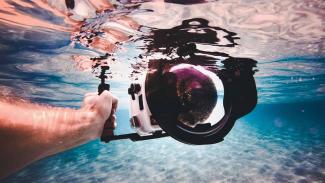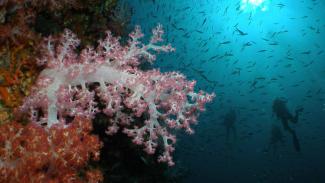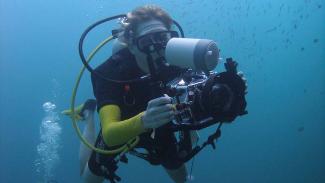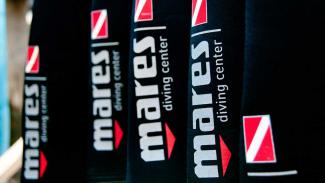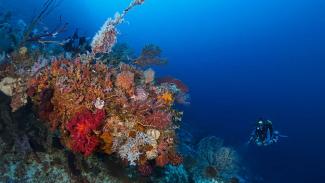
Christian Gloor
Have you ever found yourself diving on a reef wall and wondering what lurks in the depths below? Or longed to spend more than a few fleeting moments exploring a mysterious & historic shipwreck?
Then maybe technical diving is the sport for you. Increasing numbers of divers, eager to explore beyond the bounds of recreational limits, are taking an interest in technical diving.
But what is technical diving, what exactly does it involve, what are the risks and how can you get involved?
The first steps...
For recreational divers, the first step towards becoming a technical diver is to gain a nitrox certification. While nitrox diving is not technical diving, the certification will extend your knowledge of diving theory and start you on the right path.
Nitrox has the same ingredients as normal air, but with a slightly higher oxygen content. The course teaches you that by increasing the oxygen in the gas you breathe and therefore reducing your nitrogen absorption, you can safely extend your time underwater.
Nitrox does not allow you to dive deeper though. The oxygen in air becomes toxic at a depth of 66m. Nitrox has a higher oxygen content, therefore it becomes toxic at a shallower depth - effectively giving you a floor that you cannot drop below. Nitrox diving is very popular amongst recreational divers and nearly all dive centres will be able to certify you in its use.
Once you have mastered nitrox, the first stage of technical diving training teaches you to combine the use of nitrox blends and air. By switching between these different gases on a multi-level profile, you can extend your bottom time even further.
Let's say, for example, you are diving on a large wreck. You might swim along the deck of the wreck whilst using air and then - at a planned depth and time - ascend and switch to a nitrox blend, allowing you more time to safely explore around the wheelhouse, before ascending back to the surface. This type of diving keeps you within recreational depths and no decompression limits, yet by using a bit of science you can significantly and safely extend your time underwater.
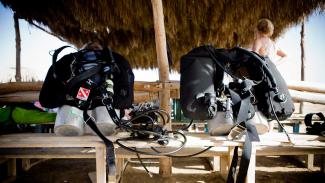
Hossam el Hamalawy
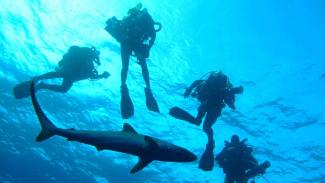
NOAA
Get involved
Deep water exploration is an exciting adventure offering you the opportunity to see and experience what only a few dedicated divers will.
There’s no doubt that the deeper you explore the ocean's depths the more risk you take, and this is why technical dive training should be taken extremely seriously. You must be well prepared, cautious, precise, disciplined and willing to accept these risks – good technical divers are not gung ho adrenaline junkies.
But follow these rules, and a new, seldom-seen world is waiting to be explored - with surreal environments, new marine life, mysterious ship-wrecks and many more incredible encounters.
If you are interested to learn more about technical diving, contact a technical diving association such as DSAT, IANTD or TDI, or speak to an instructor at a technical dive centre.

You might also enjoy...
Underwater housing care
Jakob Owens
Buying all the kit to allow you to take photos underwater is not cheap, so you need to make your equipment lasts the test of time.
One of the major and most vital expenses is your underwater housing. Housings are often fragile and can require a lot of care and attention though. So what should you be doing to look after your housing and to make sure it has a happy and healthy life?
Asia's endangered species
Tara North
Asia is home to some of the most diverse habitats in the world, both above and below the water, but it is estimated that more than one in three species are endangered... and the figure is rising alarmingly fast.
Underwater, a whole range of pressures are putting marine life under immense pressure. Intense population pressure is leading to over-fishing, pollution and the destruction of crucial habitats.
The seas of Asia
Asia is caught between two huge oceans, the Indian Ocean to the west and the Pacific to the east. In between is a complex geography of land & water that has given rise to some of the most fascinating & species rich seas on our planet.
Buyer's guide to underwater cameras
Tara North
If you are reading this article, then you probably have the bug. No doubt you’ve seen some incredible underwater photos in dive magazines or had a go and are eager for more.
There’s no doubt that having your own camera & housing is essential for your new hobby. There is such a wide range of options available today though, so how do you begin to choose?
The triangle of life
The underwater world of South-East Asia has long been famed for its wealth & diversity of marine life. But it is only relatively recently that scientists have begun to get a hold on just how diverse and special the area is.
Dive equipment guide
Enshadi


